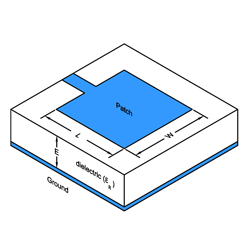
Quarter Wave Box Calculator
Over the past 15 years, I have built a number of closed and ported box. The newest versions of the MathCad worksheets are based on a calculation algorithm. Download: Quarter wave box calculator 2 1. Powered by Peatix: More than a ticket.
What is a transmission line speaker? Also called acoustic labyrinth or maze, the transmission line speaker design is a type of enclosure that follows a simple concept, yet hard to achieve. The design is pretty straight forward, but the hard part is that there is no reliable software to model the enclosure results in an accurate fashion. Shogun 2 total war blood mod free download. Of course, you can model the dimensions and internals of the box, but the problem is the damping material. The transmission line speaker design relies on heavy use of dampening material. The different types of material used, the amount, the thickness, the location where it is placed, all contribute to a different end result.
That’s why it is very hard to predict the result with a transmission line. The ways you can place damping material inside the enclosure are practically endless.
How you do so, will dictate whether the enclosure will sound good or bad. Trial and error is key to making a good transmission line. This makes it difficult for a mass producer (which is the reason why you rarely see transmission lines in your local audio store), but some DIY-ers love to tinker, and the fact that the transmission line speaker design is difficult and time consuming, will only attract them even more. How does a transmission line speaker design work? Transmission lines (TL for short) work a bit differently, compared to sealed and ported boxes.

When you make a sealed or bass reflex enclosure (passive radiator slips into this category as well), you alter the resonant peak of the speaker. Transmission line just takes the back waves generated from the speaker, inverts their phase, and throws them back in front of the speaker, to combine with the front waves. This is the main principle around how the transmission line works.
You have to understand that this is just the concept behind how the transmission line is designed. You will soon discover, that TL has some serious problems with resonant modes, which need adequate damping. Wii game iso torrent. Here is how to design the transmission line: • Take your speaker and find out what is the resonant frequency in free air (F s). • Find the corresponding wavelength for that F s.
• Find the length of the transmission line by dividing that wavelength by 4 (the quarter wavelength). • Make a path from the back of the speaker to the front of the speaker, which is exactly the length you just calculated.
• The path can take different shapes. A labyrinth is popular because it saves spaces (so enclosure doesn’t get enormous). • Damp the path with different materials of various thicknesses. • The damping material will absorb the upper frequencies, which introduce some resonance problems. • If the upper frequencies are successfully absorbed, all that is left is the low frequencies from the back of the speaker, which will combine with those in the front.
These are the general milestones you need to go through, when you are designing and building your transmission line enclosure. Of course, there are other things to worry about, but let’s just keep it simple for now, so you can get the main idea on how the transmission line speaker design works. What shape should the line be?